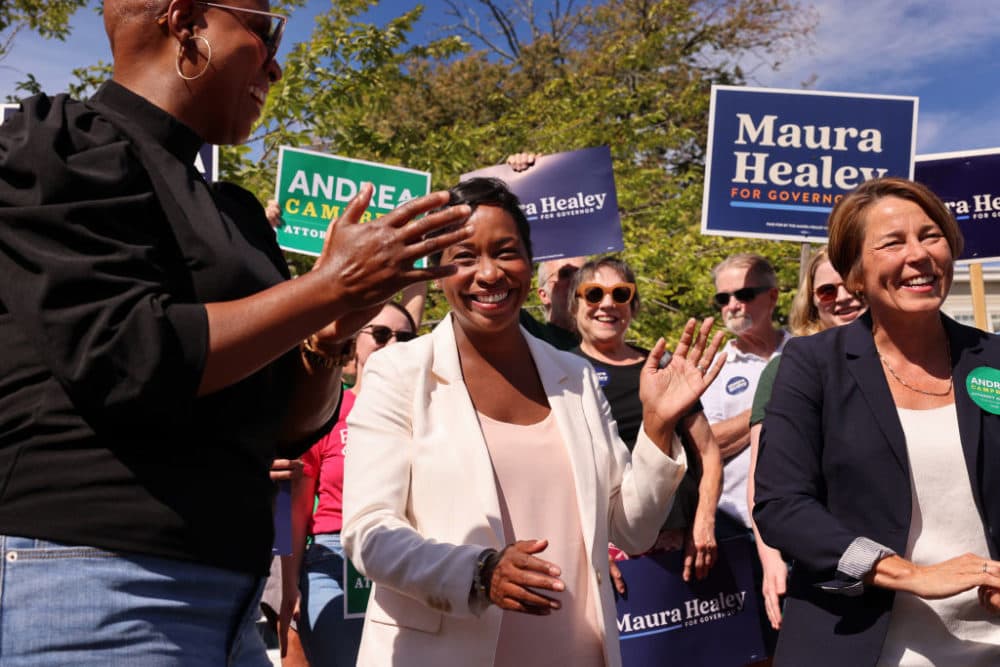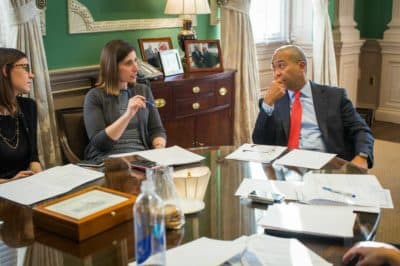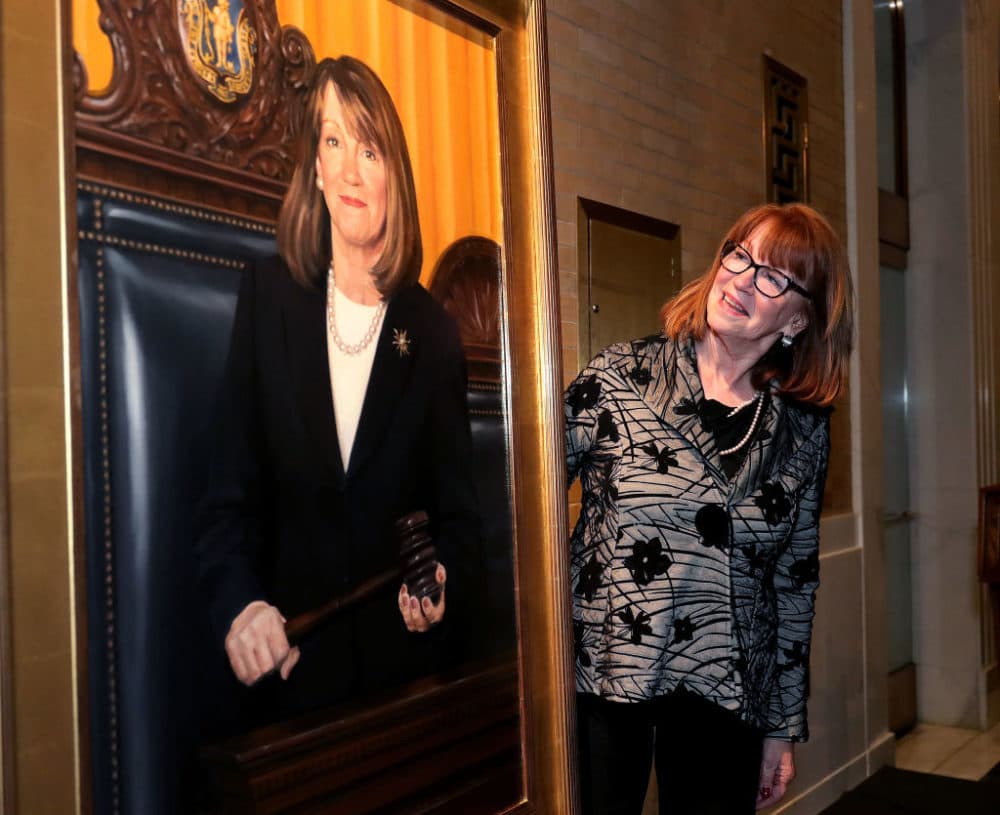Advertisement
Commentary
Voters could turn the old boys' club of Beacon Hill into the new girls' network

Let’s start with the basics: there are going to be a lot of women on the ballot for statewide office in Massachusetts this November.
Of the 11 candidates nominated by the two major parties for the six statewide offices in the commonwealth, seven are women. Two are women of color. For context: Only nine women in the history of the state — since 1780, with the election of John Hancock as our first governor — have ever served in constitutional offices in Massachusetts. Nine women ever! (And all of them were white.)
Given these facts, the sheer number of women on the ballot November 8 is noteworthy. Not to mention the fact that the Democratic gubernatorial ticket is entirely female.
But representation is about more than numbers. Representation is about seeing and being seen. It’s about kids turning on the T.V. (or perhaps pulling up TikTok on their iPhones) and seeing someone whose presence in a position of leadership would have once been an anomaly.
I worked for Gov. Deval Patrick from 2013 to 2015. My daily path in and out of the office for two years took me through the waiting area of Room 360 in the State House. It’s a grand room. A state trooper stands on watch out front, there’s a beautiful balcony at the far end, and portraits of the most recent governors line the walls. On many days school groups — usually elementary and middle school kids — would find their way there. They’d be dressed up for their big day on Beacon Hill, and would cluster around one of the building’s tour guides to learn about the people whose faces were shining down on them from inside of gilded frames.

Walk past that scene enough times and you start to notice some patterns to the Q&A part of the tour.
Who is in that framed photo sitting on Gov. Romney’s desk in his portrait? Why was Gov. Weld painted next to an armadillo (great question, kids)? And — less a question than an exclamation — Hey, that’s a girl! That last one was virtually guaranteed to come up. After walking past portraits of more than 60 men, one observant student would notice they’d finally stumbled upon a painting of a woman: Gov. Jane Swift, the first woman to ever serve in the role. Their eyes became saucers. Their necks craned upward. Sometimes it felt like you could see the wheels turning in their heads: “A girl was governor!
After years of watching students marvel at Gov. Swift’s portrait, I decided to ask her what she thought about so many women appearing on the ballot this November. She obliged. The former governor talked about how important it is to offer voters the opportunity to vote for women from a range of backgrounds and perspectives. She noted the ways in which women in office often support each other — publicly and privately. But this observation in particular resonated with me: “This cohort of candidates will likely produce a new group of women for our daughters to see and relate to.”
Advertisement
"Of course, women in politics offer much more than symbolism and inspiration"
Once upon a time I was one of those daughters. Or, more accurately, granddaughters. When I was a middle school student my grandma, Rhoda Mermell, introduced me to one of her neighbors, a woman who just happened to be the mayor of the small city where my grandparents lived. Gertrude Mokotoff presided over Middletown, New York. When I was about 12 years old, she agreed to let me spend the day with her in City Hall. I tell the story of that visit often, because it made me see what was possible.
That day I was the kid with eyes the size of saucers, my neck craned upwards as I watched Mayor Mokotoff answer questions, solve problems and just generally be in charge. A combination of privilege and luck allowed me to have that transformative experience, and it made me a lifelong evangelist for the power of being able to see what can be.
[P]rogress that has seemingly been slow to accelerate feels like it is picking up speed here in Massachusetts.
Of course, women in politics offer much more than symbolism and inspiration. Once elected, women are more likely to advance policies that impact women’s lives, tackling issues like reproductive health, paid leave, childcare and violence against women. The global organization Women Deliver notes that “women's political participation results in tangible gains for democracy, including greater responsiveness to citizen needs, increased cooperation across party and ethnic lines, and a more sustainable future.” According to one study, women in Congress deliver 9% more federal dollars to their districts than their male counterparts. They also sponsor or co-sponsor more bills than the men do.
I’ve been working in Massachusetts politics for more than 20 years, and in that time, I’ve seen us take two steps forward and three steps back. I remember my years running the Massachusetts Women’s Political Caucus when we could count the number of women who’d ever been elected statewide on one hand — back then only three women had ever represented the commonwealth on the federal level. I remember feeling hopeful that we were about to elect women to key political positions, only to have those hopes dashed on election night.

But I also remember watching Therese Murray become the first woman to serve as State Senate president. I remember seeing Niki Tsongas become the first woman in the Massachusetts congressional delegation in nearly 25 years, Elizabeth Warren become the first woman to represent Massachusetts in the U.S. Senate, and Ayanna Pressley become the first Massachusetts woman of color to serve in Washington D.C.
It isn’t lost on me that even before we get to Election Day on November 8 we have a host of women currently serving in constitutional offices: our lieutenant governor, attorney general, treasurer and auditor — all are women.
I’m usually one to manage my own expectations, but I will confess to being excited and optimistic as we head into the general election. We have a few hundred statewide positions to fill before we achieve historical gender parity, but progress that has seemingly been slow to accelerate feels like it is picking up speed here in Massachusetts.
On November 8 voters will have the chance to turn the old boys' club of Beacon Hill into the new girls' network. And school field trips to the State House will never be the same.
